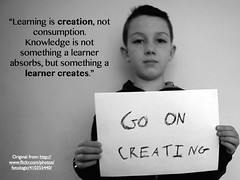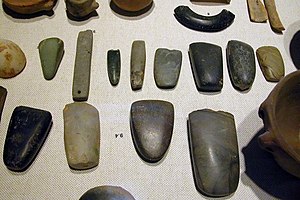 Melanie Riwai-Couch opened the Te Toi Tupu hui by talking a little bit about the work she is doing with iwi. A lot of the things she is looking it is around iwi and whānau 'voice'.
Melanie Riwai-Couch opened the Te Toi Tupu hui by talking a little bit about the work she is doing with iwi. A lot of the things she is looking it is around iwi and whānau 'voice'.Melanie is from a bicultural marriage at a time when it was unusual, and when her parents split, her father brought her up. Growing up with strong Māori roots gave her an interesting perspective on life. She lives and works in Ngāi Tahu, but does not claim Ngāa Tahu in her ancestry. There is a whole other world when it comes to iwi.
Melanie also teaches at the kura, and she discovered all of these things that didn't work for me. The students tried really hard, but there were a lot of things that kept tripping them up. For example, the letter 'i' - is it always a capital letter? So why doesn't me, he, and she have a capital letter too. It was a way to peel back the cultural layers of the spelling traditions, and the cultural shaping that underpins them. She went to the community partners to see if she could find student teachers who would come into the kura and to sit with the children while they read.
 The initiative resulted in several hundred hours of extra reading for the students - and this, Melanie feels, has helped students create a love of reading. There was a sustained shift of at least 1 to 1.5 stanine (PAT), and up to 4 to 5 stanines. This led to Melanie to ask the question, "In what ways are iwi and schools working together to improve Māori student achievement".
Students also grow in confidence ("I'll probably succeed in a lot of stuff like getting a degree at University" - Māia, Year 8), and are happy to speak to pretty much anyone.
The initiative resulted in several hundred hours of extra reading for the students - and this, Melanie feels, has helped students create a love of reading. There was a sustained shift of at least 1 to 1.5 stanine (PAT), and up to 4 to 5 stanines. This led to Melanie to ask the question, "In what ways are iwi and schools working together to improve Māori student achievement".
Students also grow in confidence ("I'll probably succeed in a lot of stuff like getting a degree at University" - Māia, Year 8), and are happy to speak to pretty much anyone.Parents also say "success for them is to be standing strong and confident and humble in anything and everything they chose to do and to be able to make mistakes and learn from them". And an Iwi education representative said that "it's that whole person" that is key, and another that "Maori student success is when student are grounded in who they are and where they come from whilst achieving success in whatever field they choose no matter where in the world they are" (Iwi Education Representative). Potential is not something that is based in the future, but it is something that students are 'being' and realising.
Three case studies (Ngā Puna Korero) have informed her thinking to date. The sort of thing that is emerging are the importance of sustaining high trust relationships, and this means that, in part, it's working with iwi in the way that iwi want to be worked with. In part this means working within communities of practice that tend to be more responsive to the needs of the participants. One of the students said "people with two languages like us are gifted, bi-lingual and bi-literate. We are talented and clever" (Ruamano, Year 10). Not all iwi receive money from the ministry for education. The purpose of Iwi Education Project funding is "to build iwi capability to engage in and contribute to the education system and the education of their whānau and hapu. This appropriation is primarily used to produce iwi education strategies, reo strategies and implementation plans; and to deliver iwi education project" (Ministry of Education, 2013, p. 1). However, there are tensions between expectations and responsibility - i.e. whose responsibility is it to implement some aspects of an initiative. The 5 iwi with the main schools include Ngai Tahu (579), Ngati Whatua (397), and Ngati Maniapoto (144). The amount of funding, compared with the geographical area or the schools they work with, however, was not scaled to the funding received...ranging from $40,000 per school to $193 per school that they work with. Resourcing is therefore an issue.
The best way to influence the impact schools is, Melanie proposes, through working with organisations such as Te Toi Tupu. Ideally, it is a case of contacting and working with all stakeholders...something that isn't possible if resourcing isn't sufficient. At the end of the day, however, a student has succeeded when students have the confidence and skills to come back to work with iwi. It's about young children building a sense of where they are from, who they are 'from', what they are doing now (as a whole, culturally shaped person), and also where they are heading next.
Images
- 'hapu'u' http://www.flickr.com/photos/37718675756@N01/6180648 Found on flickrcc.net
- 'Creation and Consumption' http://www.flickr.com/photos/49053756@N03/8120316401 Found on flickrcc.net
Related articles
- Education investment priority for Ngai Tahu (radionz.co.nz)
- Ngai Tahu assures Ngati Kahungunu over Ruataniwha dam (radionz.co.nz)







